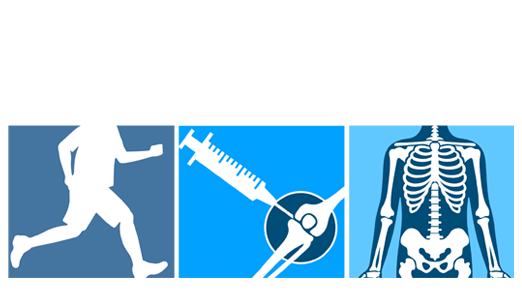Spine Basics
 Spine Basics is a quick reference to information pertaining to the spine. These pages cover basic spinal anatomy, spinal disorders, and medical terminology pertaining primarily to the fields of orthopaedic surgery and neurosurgery.
Spine Basics is a quick reference to information pertaining to the spine. These pages cover basic spinal anatomy, spinal disorders, and medical terminology pertaining primarily to the fields of orthopaedic surgery and neurosurgery.
The spinal column, or backbone, consists of 33 bones (vertebrae) and can be divided into five segments. The uppermost 24 vertebrae are separated from one another by fibrous cartilage pads, called intervertebral discs, which provide flexibility to the spine and act as shock absorbers during activity. In the lowest part of the spine, the vertebrae are naturally fused to form the sacrum and the coccyx (tail bone).
 Protruding from the back of each vertebral body is an arch of bone that forms the large, vertical opening (the spinal canal) through which runs the spinal cord and nerve bundles. A fluid-filled protective membrane, the dura, covers the contents of the spinal canal from where the cord begins at the base of the skull to where it ends (in a bundle of nerve fibers known as the cauda equina).
Protruding from the back of each vertebral body is an arch of bone that forms the large, vertical opening (the spinal canal) through which runs the spinal cord and nerve bundles. A fluid-filled protective membrane, the dura, covers the contents of the spinal canal from where the cord begins at the base of the skull to where it ends (in a bundle of nerve fibers known as the cauda equina).
A pair of spinal nerves branches at each vertebral level (one to the left and one to the right), providing sensation and movement to all parts of the body.
Three large, bony projections, or processes, arise from the vertebra’s arch – one to each side (transverse) and one straight towards the back of the body (spinous). Strong ligaments and muscles attached to the vertebra’s body and processes support the spine and further protect the delicate spinal cord and nerves encased within.

Neck and arm pain, among other symptoms, may occur when an intervertebral disc herniates. This happens when some of the disc’s jellylike center (the nucleus pulposus) bulges or ruptures through its tough, fibrous outer ring (the annulus fibrosis) to press upon a nerve. SEO

Figure 1. Normal
Lateral (side) view of a normal spine. The drawing shows the locations of the five major spinal levels. The cervical region has seven vertebrae (C1 through C7), the thoracic region has 12 vertebrae (T1 through T12) and the lumbar region has five vertebrae (L1 through L5). The sacral region consists of five vertebrae, all fused together to form one continuous bone mass known as the sacrum. The coccygeal region consists of four vertebrae, all fused together to form the coccyx or tailbone.
Figure 2. Lumbar Vertebra
Detailed views of a vertebra and vertebral segment. The drawing to the left represents a top view of a lumbar vertebra. The drawing to the right is a lateral (side) view of a segment of three lumbar vertebrae.


Figure 3. Abnormal Ruptured Disc
The drawings to the left and right represent the appearance of a herniated or ruptured disc. Both drawings show the disruption of the annulus fibrosus, the outer ring-like portion of an intervertebral disc.
The tissue located in the center of the intervertebral disc, the nucleus pulposus, is partially extruded from the intervertebral disc. The extruded nucleus pulposus material can exert pressure on nerves thus causing pain, numbness, and muscle weakness due to nerve damage.



Figure 4. Scoliosis
An abnormal spinal condition known as scoliosis is shown in this drawing. Scoliosis is a lateral (sideways) curvature of the spine.

Figure 5. Spondylolisthesis
Spondylolisthesis is an abnormal spinal condition in which one vertebra slips or is displaced over another vertebra. The drawing shows spondylolisthesis as a result of a lumbar vertebra (L5) slipping over the sacrum (S1).

Figure 6. Kyphosis
This drawing depicts the spinal condition of kyphosis. Kyphosis is an abnormal increase in normal kyphotic (posterior) curvature of the thoracic spine which can result in a noticeable round back deformity.

Figure 7. Lordosis
This drawing represents the spinal condition of lordosis. Lordosis is the abnormal increase in normal lordotic (anterior) curvature of the lumbar spine. This can lead to a noticeable “sway-back” appearance.

Figure 8. Arthritis
This drawing illustrates degenerative and hypertrophic arthritis between the 3rd, 4th, and 5th lumbar vertebrae, as well as the lumbosacral joint (L5-S1 disc space). The degeneration of the intervertebral discs has reduced the height of the discs. There are bone spurs or hypertrophic bone adjacent to the discs and hypertrophic arthritis of the facet joints. This results in a reduced range of motion of the spine. Also, the hypertrophic bone and narrowing of the intervertebral foramen can produce nerve root impingement thereby causing back and leg pain, as well as numbness and weakness of leg muscles.
